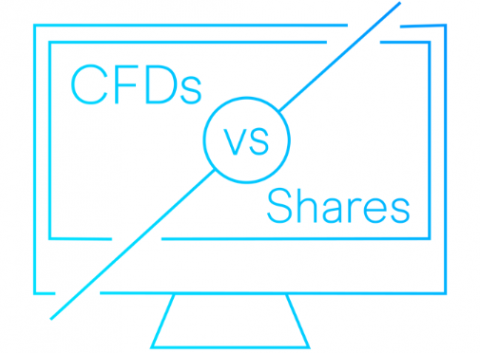With the use of financial instruments like contracts for difference (CFD) trading in shares, investors can make predictions about how the prices of different stocks will change without having to hold the underlying asset. This is a thorough examination of several share CFD aspects.
What Are Share CFDs?
Share CFDs are derivative products that enable traders to speculate on the rising or falling prices of individual stocks without owning them physically. The contract mirrors the price movement of the underlying stock. Traders can go long (buy) or short (sell) on a CFD, profiting from price fluctuations. Please find a fabulous comprehensive website for all share CFDs needs.
Advantages of Share CFDs
Leverage: By utilising leverage, CFDs enable traders to access markets with a small portion of the entire trade value. On the other hand, this can increase gains as well as losses.
Diverse Trading Opportunities: With CFDs, traders can access a wide range of shares across various markets without needing to own the underlying stock.
Short Selling: Although short selling is difficult in traditional stock markets, CFDs allow traders to profit from declining prices.
Hedging: Investors can use CFDs to hedge their existing stock portfolio against potential losses by taking opposite positions in the CFD market.
Risks Associated
Leverage Risk: Leverage increases potential gains but it also increases losses. Traders risk losing more money than they originally invested.
Market Volatility: The price of shares can fluctuate a lot, which increases exposure to risk and causes sudden, sharp price swings.
Counterparty Risk: Trading CFDs requires a broker, and traders run the risk of losing money if the broker falters.
Trading Strategies
Day Trading: Taking advantage of short-term price movements within a single trading day.
Trend Following: Identifying and capitalizing on long-term price trends, either upward or downward.
Swing Trading: Holding positions for several days or weeks to capitalize on price swings.
Considerations for Trading Share CFDs
Market Analysis: When deciding how to trade, both technical and fundamental analysis are very important.
Risk management involves a number of key components, including limiting leverage, diversifying investment portfolios, and establishing stop-loss orders.
Regulatory Environment: Different nations have different laws governing CFD trading. It is essential to comprehend the regulatory environment.
Tax Implications
Tax Efficiency: In some regions, CFDs might offer tax benefits compared to traditional stock trading. Profits made from CFDs might be subject to different tax treatments, often considered as capital gains. However, tax laws vary by country, and it’s crucial to understand the tax implications specific to your location and situation.
To sum up, In the financial markets, share CFDs give traders flexibility and opportunities. They do, however, carry some inherent risks, particularly because of leverage. A deep comprehension of the market, risk management techniques, and ongoing education are essential for success in CFD trading. In order to successfully navigate the complexities of this trading instrument, it is imperative that one approach CFD trading with a well-thought-out plan and risk mitigation strategies in place.
Never forget that while CFDs have the potential to be very profitable, they also carry a high risk. Before engaging in share CFD trading, it is advisable to obtain professional financial advice and educate oneself thoroughly.

